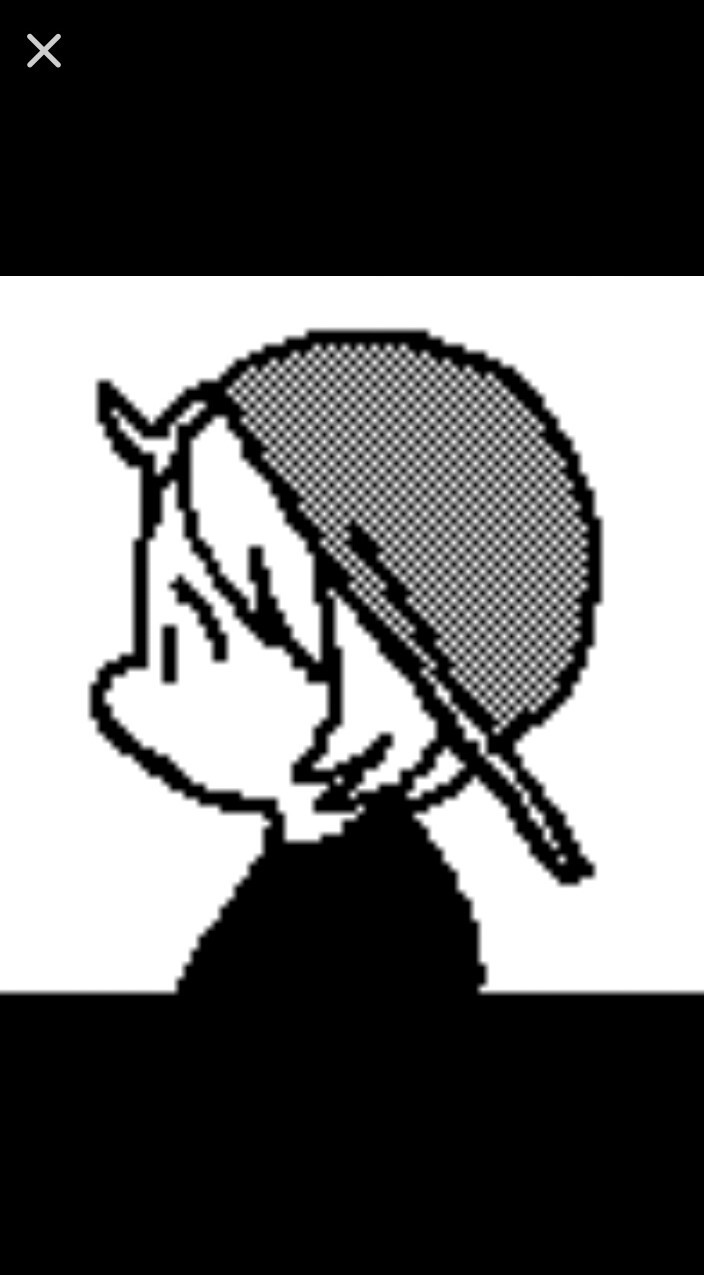
Navigation이란
Navigation은 하나의 Activity 안에서 여러 Fragment간의 전환에 중점을 두고 설계가 되었습니다.
이러한 Fragment의 전환에 있어 보일러플레이트를 제거하고, 데이터 전달과 스택 관리에있어 이점이 있습니다.
장점
공식 문서에서는 다음과 같이 설명하였습니다.
- 프래그먼트 트랜잭션 처리.
- 기본적으로 '위로'와 '뒤로' 작업을 올바르게 처리.
- 애니메이션과 전환에 표준화된 리소스 제공.
- 딥 링크 구현 및 처리.
- 최소한의 추가 작업으로 탐색 UI 패턴(예: 탐색 창, 하단 탐색) 포함.
- Safe Args - 대상 사이에서 데이터를 탐색하고 전달할 때 유형 안정성을 제공하는 그래프 플러그인입니다.
- ViewModel 지원 - 탐색 그래프에 대한 ViewModel을 확인해 그래프 대상 사이에 UI 관련 데이터를 공유합니다.
또한 아래와 같이 Navigation Editor에서 미리보기를 지원합니다.

Start Navigation
리소스 생성
dependencies 설정
아래와 같이 dependencies를 설정합니다.
build.gradle(module)
dependencies{
...
implementation 'androidx.navigation:navigation-fragment:2.5.0'
...
}프래그먼트 생성
아래 사진과 같이 New -> Fragment 를 통해서 생성할 수 있습니다.

저는 아래와 같이 프래그먼트와 해당 레이아웃 파일을 만들었습니다.
OneFragment.kt
package com.example.jetpacksample
import android.os.Bundle
import androidx.fragment.app.Fragment
import android.view.LayoutInflater
import android.view.View
import android.view.ViewGroup
import com.example.jetpacksample.databinding.FragmentOneBinding
class OneFragment : Fragment() {
override fun onCreateView(
inflater: LayoutInflater, container: ViewGroup?,
savedInstanceState: Bundle?
): View {
val binding = FragmentOneBinding.inflate(layoutInflater)
return binding.root
}
}fragment_one.xml
<?xml version="1.0" encoding="utf-8"?>
<androidx.appcompat.widget.LinearLayoutCompat
xmlns:android="http://schemas.android.com/apk/res/android"
xmlns:tools="http://schemas.android.com/tools"
android:layout_width="match_parent"
android:layout_height="match_parent"
android:orientation="vertical"
android:gravity="center"
tools:context=".OneFragment">
<TextView
android:textSize="20sp"
android:layout_width="wrap_content"
android:layout_height="wrap_content"
android:text="it is one Activity\n" />
<Button
android:id="@+id/btnOneByOne"
android:text="go to One Activity"
android:layout_width="wrap_content"
android:layout_height="wrap_content"/>
<Button
android:id="@+id/btnTwoByOne"
android:text="go to Two Activity"
android:layout_width="wrap_content"
android:layout_height="wrap_content"/>
<Button
android:id="@+id/btnThreeByOne"
android:text="go to Three Activity"
android:layout_width="wrap_content"
android:layout_height="wrap_content"/>
</androidx.appcompat.widget.LinearLayoutCompat>
네비게이션 그래프 생성
아래와 같이 res폴더에서 new -> resource file를 통해 탐색 그래프를 생성합니다


에디터의 그림과 같은 표시를 클릭하면 프래그먼트를 생성하고 화살표로 연결지어 액션을 생성합니다.
스택 관리와 애니메이션을 설정할 수 있습니다.

nav_graph.xml
<?xml version="1.0" encoding="utf-8"?>
<navigation xmlns:android="http://schemas.android.com/apk/res/android"
xmlns:app="http://schemas.android.com/apk/res-auto"
xmlns:tools="http://schemas.android.com/tools"
android:id="@+id/nav_graph"
app:startDestination="@id/menu_one">
<fragment
android:id="@+id/menu_one"
android:name="com.example.jetpacksample.OneFragment"
android:label="fragment_one"
tools:layout="@layout/fragment_one" >
<action
android:id="@+id/action_oneFragment_to_twoFragment"
app:destination="@id/menu_two" />
<action
android:id="@+id/action_oneFragment_to_threeFragment"
app:destination="@id/menu_three" />
</fragment>
<fragment
android:id="@+id/menu_two"
android:name="com.example.jetpacksample.TwoFragment"
android:label="fragment_two"
tools:layout="@layout/fragment_two" >
<action
android:id="@+id/action_twoFragment_to_oneFragment"
app:destination="@id/menu_one" />
<action
android:id="@+id/action_twoFragment_to_threeFragment"
app:destination="@id/menu_three" />
</fragment>
<fragment
android:id="@+id/menu_three"
android:name="com.example.jetpacksample.ThreeFragment"
android:label="fragment_three"
tools:layout="@layout/fragment_three" >
<action
android:id="@+id/action_threeFragment_to_oneFragment"
app:destination="@id/menu_one" />
<action
android:id="@+id/action_threeFragment_to_twoFragment"
app:destination="@id/menu_two" />
</fragment>
</navigation>여기서 각 fragment의 id 값은 menu에서 설정한 id값과 동일해야 작동한다.
프래그먼트 화면 설정
생성한 탐색 그래프를 띄워줄 프래그먼트 화면을 메인 레이아웃에 설정합니다.
activity_main.xml
<androidx.fragment.app.FragmentContainerView
android:id="@+id/fragmentContainerView"
android:name="androidx.navigation.fragment.NavHostFragment"
android:layout_width="match_parent"
android:layout_height="match_parent"
app:layout_constraintBottom_toBottomOf="parent"
app:layout_constraintEnd_toEndOf="parent"
app:layout_constraintStart_toStartOf="parent"
app:layout_constraintTop_toTopOf="parent"
app:navGraph="@navigation/nav_graph"
app:defaultNavHost="true"/>defaultNavHost : NavHostFragment가 시스템 뒤로 버튼을 가로챕니다. 하나의 NavHost만 기본값으로 지정할 수 있습니다. 동일한 레이아웃에 여러 호스트가 있다면(예: 창이 2개인 레이아웃) 한 호스트만 기본 NavHost로 지정해야 합니다.
이후에 나올 바텀네비게이션과 서랍UI의 경우 뒤로가기시 NavHost로 이동할지 여부입니다
navGraph : 생성한 탐색그래프 파일
name : navHostFragment임을 명시
화면 전환 구현
앞서 탐색 그래프에서 생성했던 액션을 인자로 프래그먼트를 전환합니다.
다음과 같이 작성했던 OneFragment에 클릭리스너를 추가해서
navController에 navigate를 이용해서 이동할 수 있습니다.
binding.btnTwoByOne.setOnClickListener{
findNavController().navigate(R.id.action_oneFragment_to_twoFragment)
}Bottom Navigation
네비게이션으로 만든 프래그먼트 및 그래프를 하단에 메뉴로 표기할 수 있습니다.

dependencies 설정
네비게이션을 이용한 UI를 만드려면 다음과 같은 의존성을 주입합니다.
build.gradle(module)
dependencies{
...
implementation 'androidx.navigation:navigation-ui-ktx:2.5.0'
...
}리소스 생성
먼저 하단에 들어갈 아이콘과 이름을 설정할 메뉴 파일을 생성합니다.
res -> new -> Menu Type 설정으로 진행할 수 있습니다.
res/menu/nav_menu.xml
<?xml version="1.0" encoding="utf-8"?>
<menu xmlns:android="http://schemas.android.com/apk/res/android">
<item
android:id="@+id/menu_one"
android:icon="@drawable/ic_baseline_music_note_24"
android:title="one" />
<item
android:id="@+id/menu_two"
android:icon="@drawable/ic_baseline_place_24"
android:title="two" />
<item
android:id="@+id/menu_three"
android:icon="@drawable/ic_baseline_newspaper_24"
android:title="three" />
</menu>그리고 메인 레이아웃에 바텀 네비게이션을 추가하고 메뉴를 설정합니다
activity_main.xml
<com.google.android.material.bottomnavigation.BottomNavigationView
android:id="@+id/nav_view"
android:layout_width="match_parent"
android:layout_height="wrap_content"
app:layout_constraintBottom_toBottomOf="parent"
app:menu="@menu/nav_menu" />바텀 네비게이션 설정
아래와 같이 host fragment를 지정해서 네비게이션 탐색 그래프가 활동할 위치를 지정해줍니다.
activity_main.xml
<fragment
android:id="@+id/fragmentContainerView"
android:name="androidx.navigation.fragment.NavHostFragment"
android:layout_width="match_parent"
android:layout_height="0dp"
app:defaultNavHost="true"
app:layout_constraintBottom_toTopOf="@+id/navBottom"
app:layout_constraintEnd_toEndOf="parent"
app:layout_constraintStart_toStartOf="parent"
app:layout_constraintTop_toTopOf="parent"
app:navGraph="@navigation/nav_graph" />바텀 네비게이션 컨트롤러 설정
아래와 같이 컨트롤러를 설정해줌으로써 작동합니다.
바텀 네비게이션은 이동할 때 스택이 쌓이지 않으며 xml에서 defaultNavHost속성을 true 했을 때 host fragment로 돌아갑니다.
MainActivity.kt
val navController = findNavController(R.id.fragmentContainerView)
binding.navBottom.setupWithNavController(navController)host fragment를 <Fragment ... /> 가 아닌 androidx.fragment.app.FragmentContainerView등 다른 레이아웃을 이용했을 경우
navController를(supportFragmentManager.findFragmentById(R.id.호스트Fragment) as NavHostFragment).navController로 지정해주어야 navController를찾을수 있습니다.
Drawer Navigation
DrawerLayout은 drawer(서랍)이라는 이름에서 알 수 있듯이
평소에는 화면의 한쪽에 숨겨져 있다가 사용자가 액션을 취하면 화면에 나타날 수 있도록 하는 레이아웃입니다.

리소스 준비
레이아웃을 위해서 먼저 res/values/themes.xml에서 액션바를 지우고 커스텀 툴바를 넣는다.
보통 서랍 UI를 여는 버튼은 액션바에 존재하기에 해당 버튼의 배치 및 아래 사진과 같이 서랍이 액션바 밑으로 가게되어 시인성이 떨어진다.

기본 액션바 지우기
res/values/themes.xml
<style name="Theme.JetpackSample" parent="Theme.MaterialComponents.DayNight.NoActionBar">새로운 툴바 생성
activity_main.xml
...
<androidx.appcompat.widget.Toolbar
android:id="@+id/toolbar"
android:layout_width="match_parent"
android:layout_height="wrap_content"
app:layout_constraintTop_toTopOf="parent"
android:background="@color/teal_700"/>
...Header layout 설정

위에서 표시한 부분인 drawer의 header 부분을 보여줄 레이아웃을 생성한다. 해당 레이아웃은 이후 서랍UI에 속성으로 적용된다
layout/nav_drawer_header.xml
<?xml version="1.0" encoding="utf-8"?>
<LinearLayout xmlns:android="http://schemas.android.com/apk/res/android"
xmlns:app="http://schemas.android.com/apk/res-auto"
android:layout_width="match_parent"
android:layout_height="wrap_content"
android:background="@color/teal_200"
android:gravity="bottom"
android:orientation="vertical"
android:theme="@style/ThemeOverlay.AppCompat.Dark">
<ImageView
android:id="@+id/imageView"
android:layout_width="wrap_content"
android:layout_height="wrap_content"
android:padding="16dp"
app:srcCompat="@mipmap/ic_launcher_round" />
<TextView
android:layout_width="match_parent"
android:layout_height="wrap_content"
android:padding="8dp"
android:text="Android Studio"
android:textAppearance="@style/TextAppearance.AppCompat.Body1" />
<TextView
android:id="@+id/textView"
android:layout_width="wrap_content"
android:layout_height="wrap_content"
android:padding="4dp"
android:text="android.studio@android.com" />
</LinearLayout>서랍 UI 설정
Drawer Navigation을 레이아웃에 설정하려면 최상위 레이아웃을 DrawerLayout으로 설정하고 Drawer navigation이 기존 루트 레이아웃까지 덮을 수 있도록 맨 아래에 추가한다.
activity_main.xml
<androidx.drawerlayout.widget.DrawerLayout
...>
<!--기존 루트 레이아웃-->
<androidx.constraintlayout.widget.ConstraintLayout
...>
...
</androidx.constraintlayout.widget.ConstraintLayout>
<com.google.android.material.navigation.NavigationView
android:id="@+id/navDrawer"
android:layout_width="wrap_content"
android:layout_height="match_parent"
android:layout_gravity="start"
android:fitsSystemWindows="true"
app:headerLayout="@layout/nav_drawer_header"
app:menu="@menu/nav_menu" />
</androidx.drawerlayout.widget.DrawerLayout>headerLayout 속성에 이전에 만들었던 header layout파일을 설정한다
menu 속성은 header 밑에 나올 컨텐츠 목록으로 기존에 쓰던 메뉴파일과 동일하게 설정
layout_gravity속성으로 왼쪽 또는 오른쪽에서 나오도록 지정
이제 서랍UI를 나오게 할 메뉴버튼을 툴바에 적용하자
메인 액티비티에서 다음의 코드로 버튼을 생성한다.
setSupportActionBar(binding.toolbar) // 액션바 등록
supportActionBar?.setDisplayHomeAsUpEnabled(true) // 왼쪽 상단 버튼 만들기
supportActionBar?.setHomeAsUpIndicator(R.drawable.ic_baseline_menu_24) //왼쪽 상단 버튼 아이콘 지정이제 navController에 drawerNavigation을 설정해서 동기화 해보도록 한다
binding.navDrawer.setupWithNavController(navController)이제 메뉴 버튼을 누를때마다 서랍UI가 열릴 수 있도록 툴바에 리스너를 onOptionsItemSelected 메서드를 오버라이드해서 등록한다
override fun onOptionsItemSelected(item: MenuItem): Boolean {
when(item.itemId){
android.R.id.home -> binding.mainActivityLayout.openDrawer(Gravity.START)
}
return super.onOptionsItemSelected(item)
}
override fun onBackPressed() {
if(binding.mainActivityLayout.isDrawerOpen(binding.navDrawer))
binding.mainActivityLayout.closeDrawer(Gravity.START)
else
super.onBackPressed()
}샘플 코드 및 참고 사이트
샘플 코드
https://github.com/WorldOneTop/AndroidJetpackSample/tree/Navigation
참고 사이트
https://developer.android.com/guide/navigation
https://medium.com/nbt-tech/android-navigation-%EC%93%B8%EA%B9%8C%EB%A7%90%EA%B9%8C-964388a562e0
https://material.io/components/navigation-drawer
작동 영상

